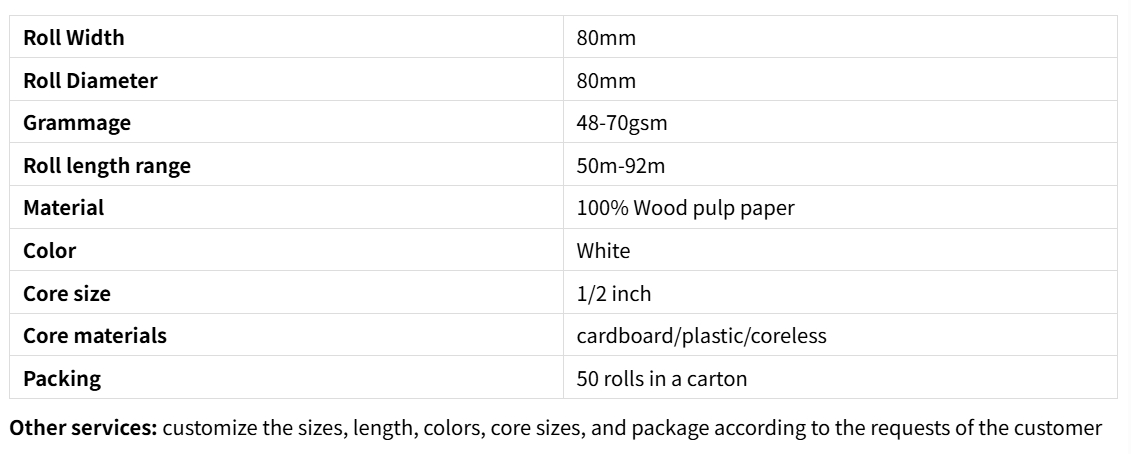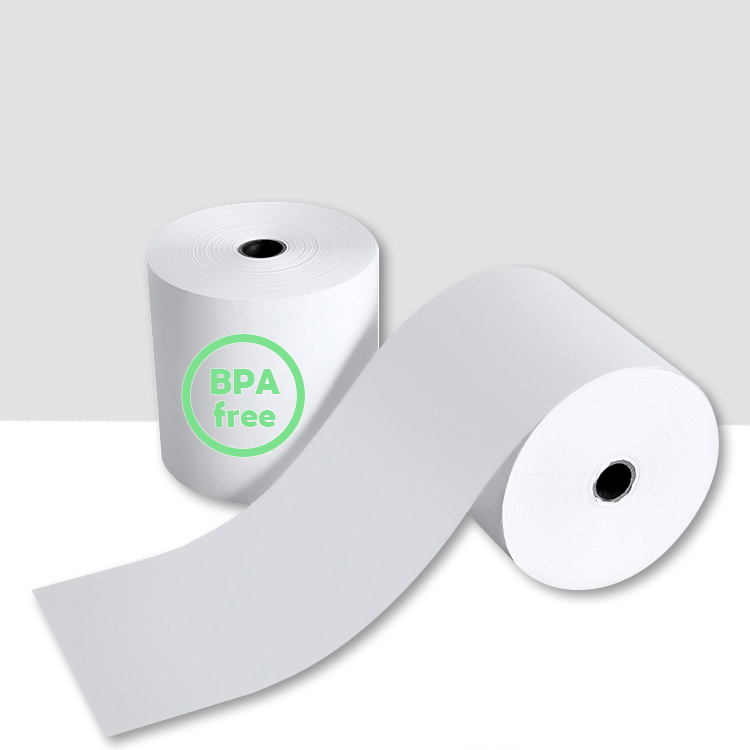

| Availability: | |
|---|---|
| Quantity: | |








The paper is designed to have a specific surface roughness that is optimized for heat transfer. This roughness allows the heat from the thermal print head to be effectively absorbed by the coating, resulting in clear and distinct prints. The thickness of the paper is also carefully controlled to ensure that it feeds smoothly through the printer and provides the necessary support for the heat-sensitive layer. The edges of the paper are rounded to prevent any damage to the printer's feed mechanism, ensuring a trouble-free printing experience.

One of the significant advantages of our thermal paper is its low maintenance requirements. Since it doesn't rely on ink or toner, there is no need for complex cleaning or maintenance procedures to keep the printer in good working condition. This saves both time and money for businesses that use thermal printers regularly. The consistent quality of our thermal paper also means that there are fewer print errors, reducing the need for reprints and improving overall productivity.
Another advantage is its compatibility with a wide range of printing software and applications. Whether you are using a simple point-of-sale system or a complex enterprise-level printing solution, our thermal paper can work seamlessly with your existing setup. This makes it a convenient choice for businesses that want to upgrade their printing capabilities without having to invest in new hardware or software.
Thermal paper is widely used in the logistics and warehousing industry for printing inventory labels, pick lists, and shipping manifests. The ability to print quickly and accurately helps in streamlining the inventory management process and ensuring that products are shipped out on time. In the retail and e-commerce sector, it is used for printing invoices, packing slips, and product labels. The clear and legible prints on our thermal paper help in providing customers with accurate information about their orders.
In the government and public sector, thermal paper is used for printing official documents, such as tax forms, licenses, and permits. The security features of our thermal paper, such as watermarking and anti-copying technology, make it suitable for these sensitive applications. It is also used in the education sector for printing report cards, attendance sheets, and examination papers.
Q: What is the shelf life of thermal paper?
A: The shelf life of thermal paper depends on various factors, including storage conditions. When stored in a cool, dry place away from direct sunlight and heat sources, thermal paper can have a shelf life of up to two years. However, if exposed to adverse conditions, the shelf life may be reduced. It is important to follow the storage guidelines provided by the manufacturer to ensure the best performance of the thermal paper.
Q: Can I print colored images on thermal paper?
A: Thermal paper is primarily designed for black and white printing as the heat-sensitive coating changes color based on the heat applied. While it is possible to create some visual effects that may appear as different shades of gray, it is not possible to print true colored images on standard thermal paper. There are some specialized thermal papers that can produce limited color prints, but they are not as common.
Q: How does the temperature affect the printing on thermal paper?
A: Temperature can have a significant impact on the printing on thermal paper. Higher temperatures can cause the heat-sensitive coating to react more quickly, resulting in darker prints. However, if the temperature is too high, it can also cause the coating to overreact and produce a blurred or uneven print. Lower temperatures may require more heat from the print head to achieve the desired print quality. It is important to operate thermal printers within the recommended temperature range for optimal results.
Q: Can I use thermal paper in a portable thermal printer?
A: Yes, our thermal paper is suitable for use in portable thermal printers. In fact, its compact size and ease of use make it a popular choice for portable printing applications. However, it is important to ensure that the portable printer is compatible with the size and type of thermal paper you are using. Some portable printers may have specific requirements regarding paper width and thickness.
